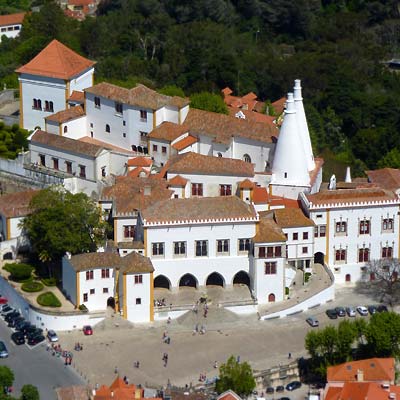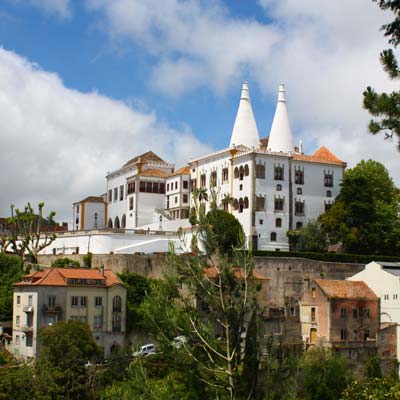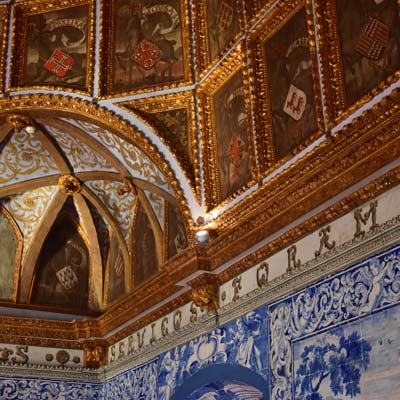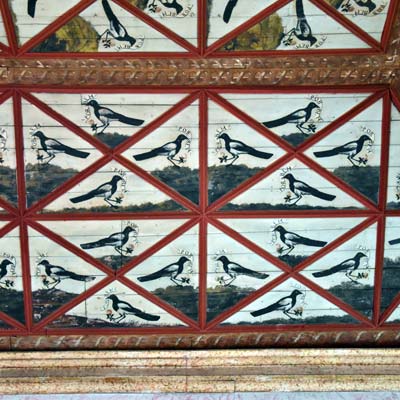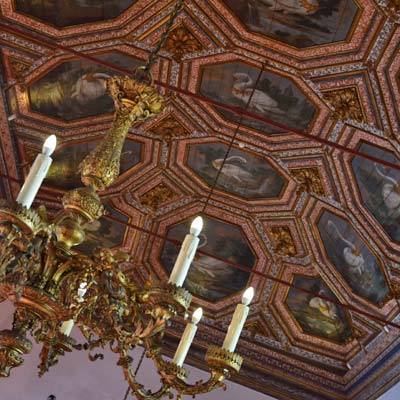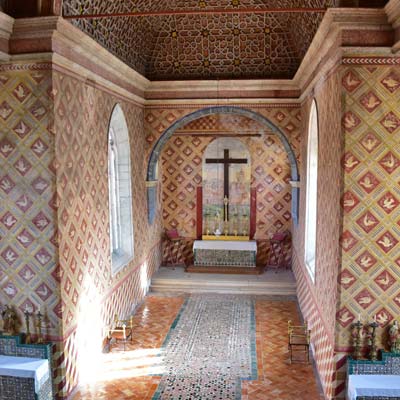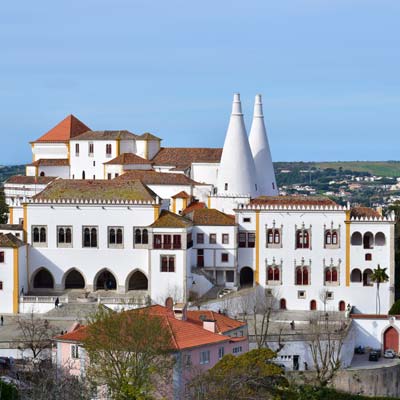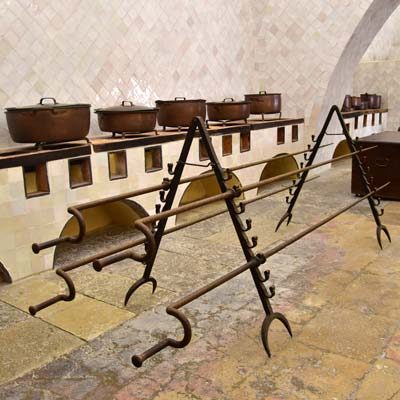Sintra-Portugal.com
The best independent guide to Sintra
Sintra-Portugal.com
The best independent guide to Sintra
Palacio Nacional - National Palace, Sintra: A Tourist Guide
The Palacio Nacional Sintra is the best-preserved medieval royal palace in Portugal and was a favourite with the Portuguese nobility.
The minimalistic gothic exterior of the palace hides a wonder of decorative state rooms and the national palace is a highly recommended attraction while visiting Sintra. The palace’s long history has been intertwined with the fortunes of Portugal’s ruling nobility, who resided here from the early 15th through to the late 19th century making it Portugal’s most lived in royal palace.
The Palacio Nacional de Sintra is situated right in the heart of Sintra and this lead the palace to be commonly referred to as the Palacio da Vila, the Town Palace. The most notable exterior feature are the two massive chimneys, which protrude from the kitchens which have become the icon of Sintra.
Palacio Nacional Sintra Tourist Information
The Palacio Nacional de Sintra is open every day from 9:30 until 19:00 and the last entrance at 18:30. The entrance fee is €10.00/€8.50/€8.50/€33.00 (adult/child/senior/family).
A typical visits last between 30-60 minutes depending of level of exploration.
Highlights of the Palacio Nacional Sintra
The following images are the main highlights inside (and paid section ) of the palace.
Palacio Nacional Sintra History and Further Information
The Palacio Nacional de Sintra was constructed on the site of an important Moorish castle but this was completely destroyed during the construction of the palace by king João I (John I 1385 – 1433). João undertook a major building program across Portugal and the Palacio Nacional de Sintra was one of his largest construction projects.
João constructed the original layout of the Palace which included the front whitewashed facades, the main entrance and the central courtyard which is known as the Ala Joanina. The early palace blended both Manueline styles and Moorish architecture.
The most visually striking exterior feature of the Palacio Nacional de Sintra are the two large chimneys that were not built to vent the large kitchens fires and ovens away from the main chambers of the Palacio Nacional de Sintra. The two chimneys were constructed during the first phase of building work on the palace.
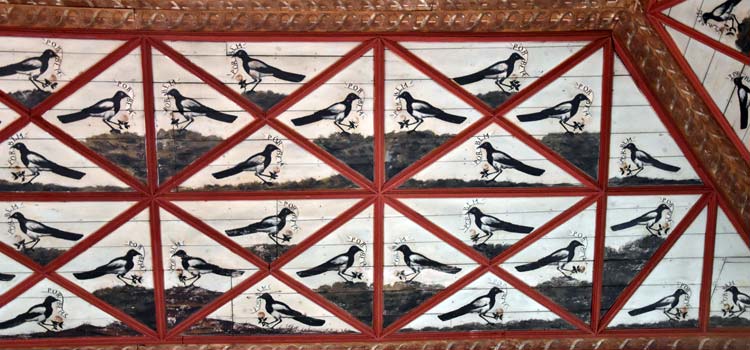
All the chattering "magpies" of the kings court...
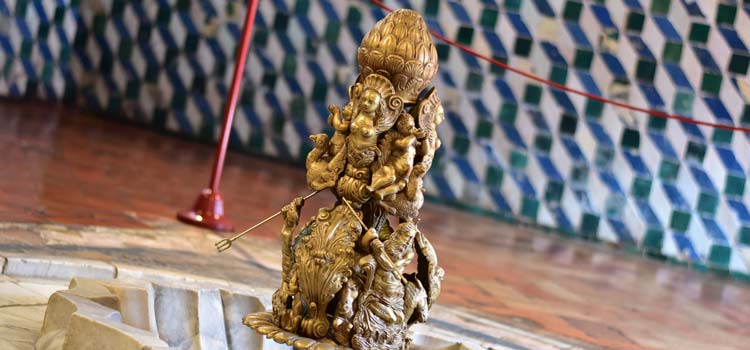
The central feature in the Arab Room
The Palacio Nacional de Sintra was the preferred residence for João’s son King Duarte, who spent much of his reign based within the palace. The popularity of the palace continued through to the 15th century when more lavish royal building were constructed. King Afonso V was both born and died in the Palacio Nacional de Sintra.
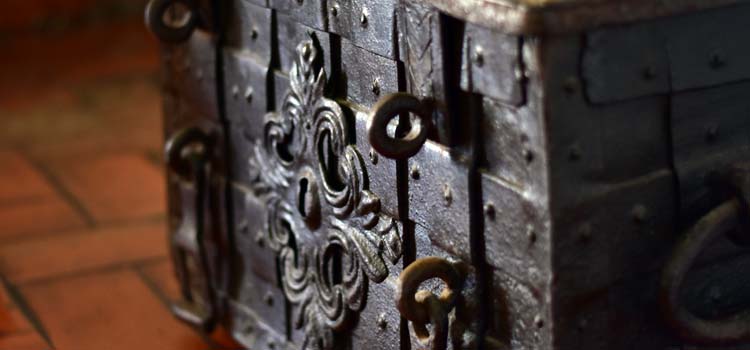
If you've found our content valuable, we'd welcome your support.
The digital publishing landscape has evolved significantly. As a small independent publisher, we face growing challenges. Search engines increasingly favour paid content over organic results, while AI-generated content often reproduces original work without attribution.
To support our work, please consider bookmarking this page (press Ctrl + D) for quick access. If you find an article helpful, we'd be grateful if you'd share it with friends on social media.
For specific questions, please see our Reddit community at r/LisbonPortugalTravel.
Should you notice any outdated or incorrect information, please contact us at [email protected]
Thank you for helping us continue to provide valuable content in an increasingly challenging digital environment.
A complete list of all of our Sintra and Lisbon guides
If you've found our content valuable, we'd welcome your support.
The digital publishing landscape has evolved significantly. As a small independent publisher, we face growing challenges. Search engines increasingly favour paid content over organic results, while AI-generated content often reproduces original work without attribution.
To support our work, please consider bookmarking this page (press Ctrl + D) for quick access. If you find an article helpful, we'd be grateful if you'd share it with friends on social media.
For specific questions, please see our Reddit community at r/LisbonPortugalTravel.
Should you notice any outdated or incorrect information, please contact us at [email protected]
Thank you for helping us continue to provide valuable content in an increasingly challenging digital environment.
